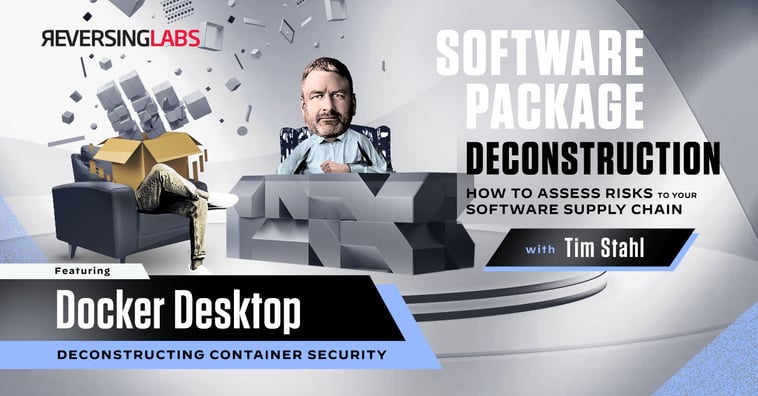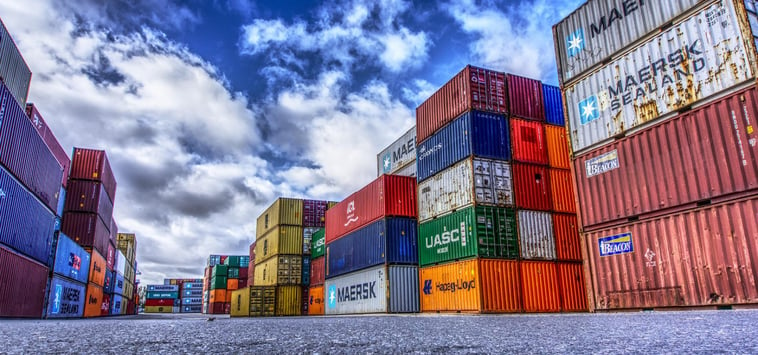Blog Report
Blog Report

The state of container security: Teams and tools are key to releasing software confidently
Learn moreSoftware Package Decon

Container — A lightweight, standalone software package that encapsulates an application and all its dependencies, providing a consistent and isolated runtime environment. Containers enable developers to package applications once and run them consistently across various computing environments, from development to production.
Container security protects applications and data from potential threats and breaches. Because containers share the host system's kernel, a vulnerability in one container can compromise others on the same host. Understanding container security helps ensure data confidentiality, integrity, and availability while preventing unauthorized access and data leaks.
Development environments: Containers are popular with developers for testing and debugging applications, allowing them to create isolated environments that mirror the production setup.
Production deployment: Containers streamline the deployment process to production, enabling seamless scaling and efficient resource utilization.
Microservices: Containers are the foundation of microservices architecture, facilitating the development of complex, scalable applications.
Continuous integration/continuous deployment (CI/CD): Containers enhance CI/CD pipelines, promoting faster and more consistent application deployment.
Multi-tenancy security: Container security is paramount in multi-tenant environments, where various users or entities share unified infrastructure and resources. Maintain individual application and data integrity by ensuring that tenants remain isolated to prevent potential data breaches and unauthorized cross-access. Multi-tenant container platforms must incorporate rigorous isolation mechanisms, such as namespaces and control groups, and bolster them with stringent access controls, including RBAC policies, to restrict resource access based on specific roles and permissions.
Runtime security: Container runtime security is crucial for real-time monitoring of containers, which are dynamic and can rapidly change states. Techniques such as runtime profiling, behavior analysis, and anomaly detection let you consistently observe container behavior against predefined security policies. This vigilance allows security teams to instantly spot threats, ranging from unauthorized connections to unusual process activities. Beyond mere detection, these practices facilitate automated actions, such as isolating or terminating a container under malicious attack, ensuring that threats are promptly contained and mitigated.
Compliance auditing: Adhering to regulatory and security compliance standards is aided by container security tools and practices that offer in-depth insights into the security landscape and produce extensive reports and logs that showcase the application of vital security controls, vulnerability management, and more. These security tools and practices help organizations to readily validate their compliance during audits, averting potential fines and bolstering their reputation for valuing security and data protection.
Enhanced security posture: In modern software development, containers' portability and lightweight nature make them highly useful. However, they can introduce security vulnerabilities if not managed correctly. By diving deep into container security intricacies, businesses can preemptively spot vulnerabilities, safeguarding their applications and sensitive data. Essential container security practices include regular vulnerability scanning of container images using automated tools, which help in timely patching, and real-time monitoring for potential security threats. Together, these strategies ensure that organizations detect and rapidly respond to security incidents, staying ahead of potential threats.
Compliance and risk mitigation: In container security, safeguarding against external threats goes hand in hand with meeting industry regulations and compliance standards. By prioritizing container security, organizations both shield themselves from potential threats and align with regulatory requirements and best practices. Implementing rigorous container security measures diminishes the risk of data breaches and unauthorized access, which can lead to severe repercussions such as fines, reputational damage, and potential legal actions. By embedding container security practices into development and operational processes, organizations can navigate compliance audits more seamlessly, ensuring that their reputation and financial stability remain intact.
Increased customer trust: A robust commitment to container security is key to earning customer trust. When organizations ensure that their customers' data resides within secure, well-managed containers, they bolster confidence among customers, clients, and partners and enhance their likelihood of being entrusted with sensitive information. While breaches can erode trust and strain professional relationships, being proactive about container security solidifies a business's reputation for reliability and integrity.
Cost savings: Integrating security early in the development cycle, especially during containerization, can yield significant cost savings over time. Prioritizing container security helps ward off potential incidents that may result in considerable financial setbacks and downtime and circumvents the steep costs of addressing breaches and subsequent investigations and remediations. Minimizing downtime from security issues preserves operational continuity, productivity, and potential business opportunities, further reinforcing the financial benefits of a proactive security approach.
Regular vulnerability scanning: Employ automated tools to scan container images for known vulnerabilities and apply security patches promptly.
Container image verification: Ensure that container images originate from trusted sources and implement image signing and verification mechanisms.
Role-based access control (RBAC): Restrict user access and permissions within the container orchestration platform.
Network segmentation: Isolate containers, limiting lateral movement in case of a breach.
For further insights into containers and their implications, explore the following articles:


